Fire Safety Checklist
Older adults (age 65 and older) are more than twice as likely to die in fires than the Nation’s population as a whole. Individuals aged 85 or older are more than four times likely to die in a fire than the general population. Older adults have a higher risk of injury from fires. This fire safety checklist is designed to help older adults and their caregivers learn about fire safety. Fire is Everyone’s Fight!
What are your home fire safety risks?
| Yes | No | |
|---|---|---|
| ▢ | ▢ | Do you have working smoke alarms on every level of your home? |
| ▢ | ▢ | Do you stay in the kitchen while you are frying, grilling, or broiling food? |
| ▢ | ▢ | Are space heaters placed at least 3 feet or more away from things that can burn? |
| ▢ | ▢ | Are all electrical cords in good condition (not damaged or cracked)? |
| ▢ | ▢ | Do you know two ways out of every room in your home? |
| ▢ | ▢ | Do you know what to do if your smoke alarm sounds? |

If you check NO to any of these questions, you are at a greater risk for being injured in a home fire. The following pages provide information to help you understand and correct your home fire hazards:
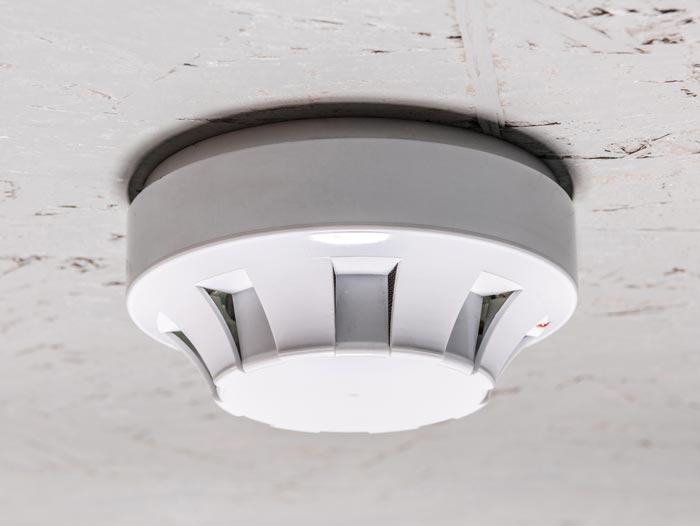
Install and Maintain Smoke Alarms
Every year in America nearly 3,000 people die in home fires. Many of these people die in homes that do not have working smoke alarms. Smoke alarms warn you and your family when there is a fire. They can save your life. Smoke is a deadly mix of particles and gas that is made by fire. Smoke alarms will warn you that there is a fire before you see, hear, or smell it. Smoke alarms give you extra time to escape.
| ▢ | Do you have working smoke alarms on every level of your home? |
| ▢ | Do you stay in the kitchen while you are frying, grilling, or broiling food? |
| ▢ | Are space heaters placed at least 3 feet or more away from things that can burn? |
| ▢ | Are all electrical cords in good condition (not damaged or cracked)? |
| ▢ | Do you know two ways out of every room in your home? |
| ▢ | Do you know what to do if your smoke alarm sounds? |
Fire Safe Cooking
Cooking fires are the number one cause of home fires in America. Many older adults also experience burn-related injuries during cooking. Prevent fires and burns by being watchful and alert when you cook.
| ▢ | Don’t cook if you are sleepy, have consumed alcohol, or have taken medicine or drugs that make you drowsy. |
| ▢ | Stay in the kitchen when you are frying, grilling, or broiling food. If you leave the kitchen for even a short period of time, turn off the stove. |
| ▢ | If you are simmering, baking, roasting, or boiling food, check it regularly. Remain in the home while food is cooking, and use a timer to remind you that you’re cooking. |
| ▢ | Turn pot handles away from the stove’s edge. |
| ▢ | Never lean over a lit burner. |
| ▢ | Wear short, close-fitting or tightly rolled sleeves while cooking. Loose clothing can catch fire if it touches a gas flame or an electric burner. |
| ▢ | Check the kitchen after you finish cooking. Make sure the oven, burners, and other appliances are off. |
| ▢ | If a fire starts, stay calm and get out. Once out, call 9-1-1 or the fire department from a cell phone or a neighbor’s telephone. Have an outside meeting place a safe distance in front of your house where first responders can see you. |
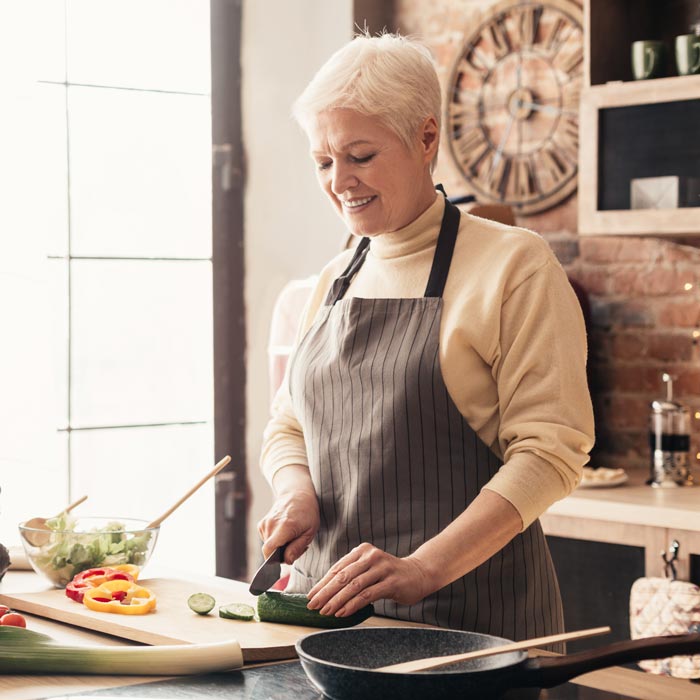
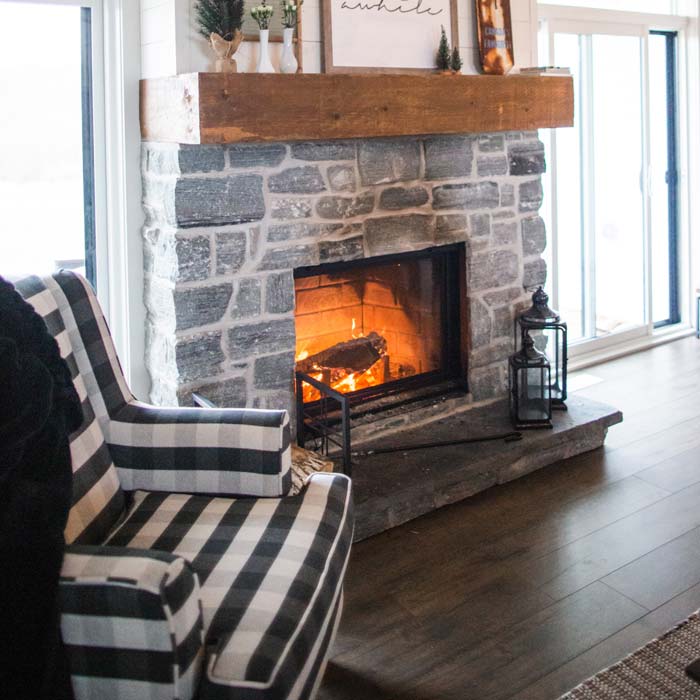
Heat Your Home Safely
When it is cold outside, we heat our homes to stay healthy and warm. But heating equipment can also cause fires if not used correctly.
| ▢ | Turn off space heaters if you leave the room or are going to sleep. |
| ▢ | Have a qualified professional install heating equipment. |
| ▢ | Ask a professional to inspect your heating system every year. |
| ▢ | Never use an oven, stovetop, dryer, or grill to heat your home. |
| ▢ | Store propane and other heating fuels outside of your home. |
| ▢ | To prevent scalds, set the temperature of your water heater no higher than 120 °F (49 °C). |
| ▢ | Make sure all fuel-burning equipment is safely vented to the outside to avoid carbon monoxide (CO) poisoning. |
| ▢ | Install CO alarms—especially if the home is heated by any source other than electricity. Test at least once a month. Maintain and replace CO alarms according to the manufacturer’s instructions. |
Practice Electrical Safety
Older homes are more likely to catch fire from electrical causes than newer homes. Older wiring may not have the capacity to safely handle newer appliances and equipment and may not have updated safety features.
| ▢ | Use light bulbs that match the recommended wattage on the lamp or light fixture. |
| ▢ | Electrical work should only be done by a licensed electrician. |
| ▢ | Check all electrical appliances often. Replace cracked, damaged, and loose electrical cords. |
| ▢ | Replace outlets if plugs do not fit snugly or the outlet does not accept plugs with one blade larger than the other. |
| ▢ | Major appliances (refrigerators, stoves, washers, dryers, etc.) should be plugged directly into a wall outlet. |
| ▢ | Plug only one high-wattage appliance into an outlet at a time, even if the outlet has space for two plugs. |
| ▢ | Avoid using extension cords. Have a licensed electrician determine if additional outlets are needed. |
| ▢ | Arc fault circuit interrupters (AFCIs) shut off electricity when a dangerous situation occurs. Have a licensed electrician install them in your home. |
| ▢ | Find reasons for blown fuses and tripped circuit breakers. Have a licensed electrician inspect and correct the problem. |
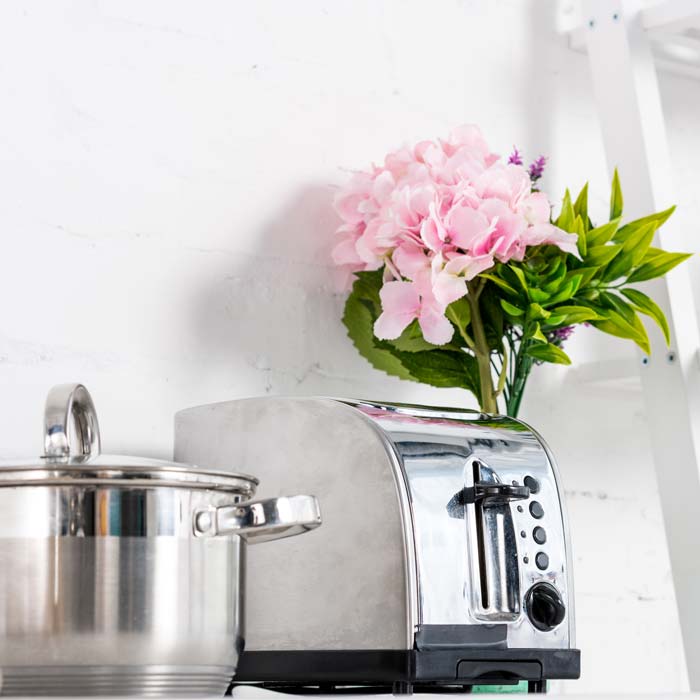
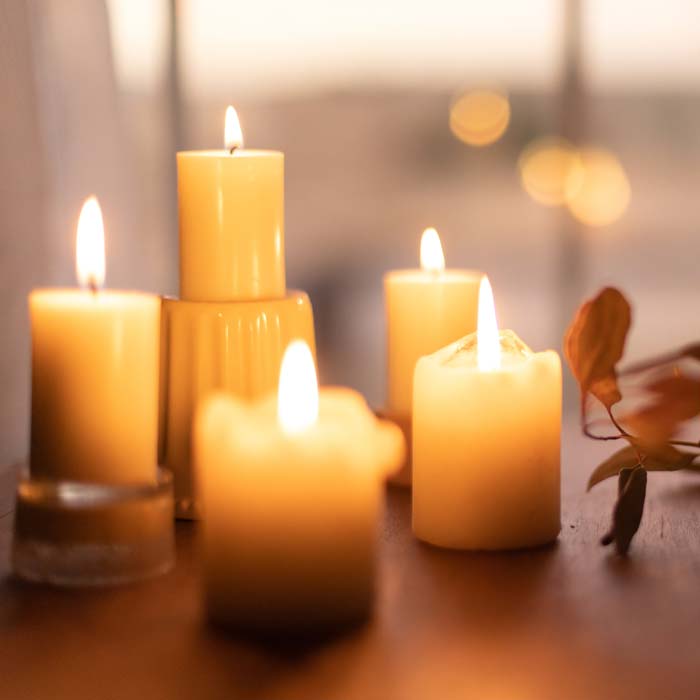
Candle Safety
Candles are pretty to look at, but remember that a candle is an open flame and can easily ignite anything that burns around it.
▢Always use a flashlight—not a candle—for emergency lighting.
| ▢ | Only burn candles when you are in the room. |
| ▢ | Never light candles if you are tired and might fall asleep. |
| ▢ | Consider using battery-operated flameless candles. They look, smell, and feel like real candles but won’t cause a fire. |
| ▢ | Use sturdy, safe candleholders. |
| ▢ | Protect candle flames with glass chimneys or containers. |
| ▢ | Keep candles at least 12 inches from anything that can burn. |
| ▢ | Never use candles in bedrooms. |
| ▢ | Never use a candle where medical oxygen is being used. |
Plan your escape
Planning what to do in case of fire can make the difference between life and death.
▢Know and practice two ways out of every room in your home.
| ▢ | Make sure all doors and windows that lead outside open easily. |
| ▢ | Clear all clutter that may block your escape route or make you trip or fall. |
| ▢ | If you use a wheelchair or walker, or might have a problem escaping from a fire, discuss your escape plans ahead of time with your fire department, your family, the building manager, and neighbors. |
| ▢ | Keep eyeglasses, keys, hearing aids, and a phone within reach next to your bed. |
| ▢ | Have an outside meeting place a safe distance in front of your home where first responders can see you. |
| ▢ | Practice your home fire escape drill twice a year. |
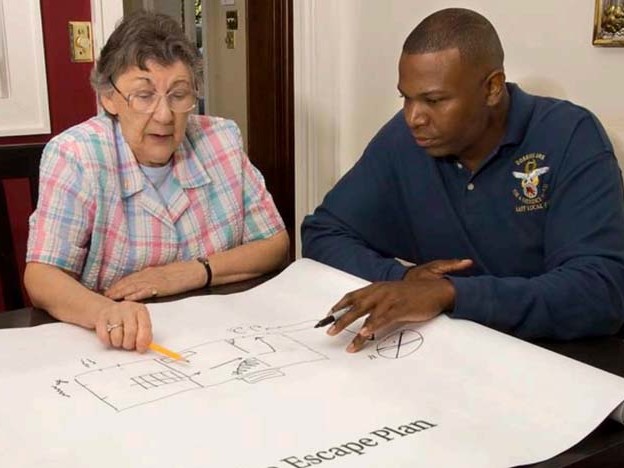
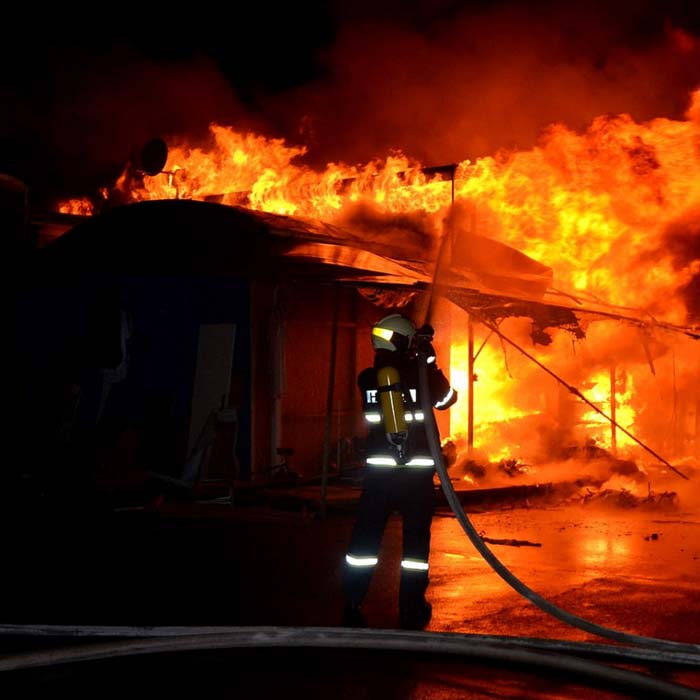
What to do in case of fire
Practice how to get to your outside meeting place quickly. In a fire, you may have only seconds to escape safely after you hear a smoke alarm.
| ▢ | Always use a flashlight—not a candle—for emergency lighting. |
| ▢ | Stay calm when the smoke alarm sounds. Get out fast and stay out. Never go back inside for people, pets, or things. |
| ▢ | Feel the doorknob and the cracks around a door before opening. Leave the door closed, and use your second way out if you feel any heat. |
| ▢ | Smoke is poisonous. If you must escape through smoke, get low and go under the smoke to your way out. |
| ▢ | If you can’t get out, keep the door of your room closed, and cover vents and cracks around doors with cloth or tape to keep smoke out. |
| ▢ | If you can’t get out and there is a phone in the room, call 9-1-1 or your local emergency number for your fire department. Stay where you are, and signal for help at the window with a light-colored cloth or flashlight. |
For more information about fire safety for older adults, please visit our website:
www.usfa.fema.gov
Search: “Fire Safety for Older Adults”
Your local fire department may be able to visit your home to install smoke alarms and answer your questions. Call the non-emergency number to ask for help.